Orchids do not require complicated care, however, their diseases, too, are not always bypassed. Basically, they are attacked by various flower pests, such as aphids and midges. When midges in orchids are wound up, you need to get rid of them carefully, but urgently. It is quite possible to deal with them if treated with special formulations.
Why are midges and their species
The appearance of midges may be due to the use of purchased soil. After planting and watering, black midges and their larvae appear on the foliage. They begin to multiply, and infect other nearby plants.
The main reasons for the appearance of midges:
- transfer;
- purchase of poor quality soil in the store;
- inadequate care.
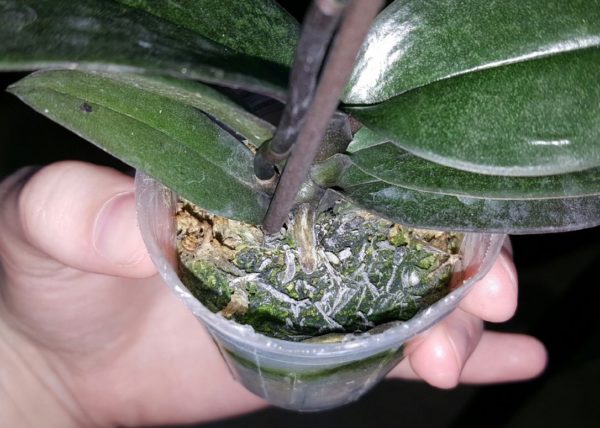 It is not always possible to avoid the appearance of pests, which means that you need to learn how to get rid of an already committed problem.
It is not always possible to avoid the appearance of pests, which means that you need to learn how to get rid of an already committed problem.
To know how to breed one or another species, you need to "get acquainted" with the characteristics of pests and understand how to get rid of midges in orchids.
On orchids, the following can start:
- sciarides;
- whiteflies;
- thrips;
- Drosophila;
- mushroom mosquitoes;
- fruit midges.
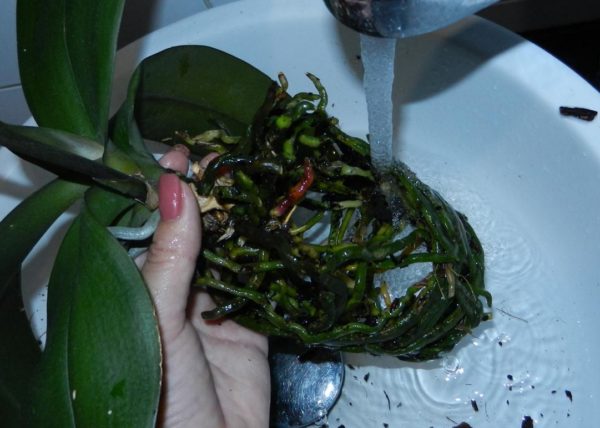 Sciarides are the oldest insect species. More than 20,000 species are known. The most common are:
Sciarides are the oldest insect species. More than 20,000 species are known. The most common are:
- sciara;
- lycorielle;
- bradzia.
The danger is that they can not be removed completely at home.
Mushroom mosquitoes are considered the safest “visitors” on orchid leaves. Signs of defeat:
- the soil does not dry out even after a two-day absence of watering;
- there are no spots and silver coating on the leaves;
- flying insects fly directly from the ground in a pot with an orchid.
The danger is the larvae that affect the roots of the flower.
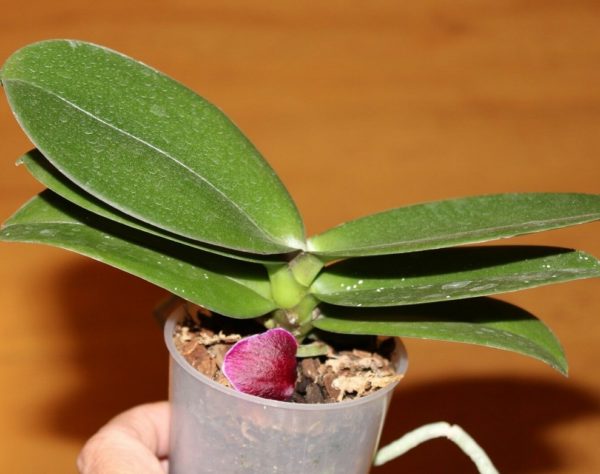 Whiteflies - the appearance of this insect is promoted by high temperatures and excessive humidity in the room where the orchid grows. Whiteflies are located on the underside of the leaf, but they are easy to detect if you lightly touch the leaf with your hand. They got their name due to the possession of white wings. These insects are capable of provoking viral diseases.
Whiteflies - the appearance of this insect is promoted by high temperatures and excessive humidity in the room where the orchid grows. Whiteflies are located on the underside of the leaf, but they are easy to detect if you lightly touch the leaf with your hand. They got their name due to the possession of white wings. These insects are capable of provoking viral diseases.
Symptoms of defeat:
- flower growth stops;
- yellow “mosaic” spots appear on the leaves;
- the shape is deformed, the surface is covered with black spots, turns yellow.
In the warmer months, whiteflies can be carried by the wind.
To get rid of midges at home, it is recommended to treat phalaenopsis (the process does not depend on the variety) with a soap solution, cleaning off the plaque with a brush, because the larvae adhere sufficiently to the surface. It is advisable to plant nasturtium in pots next to orchids, as these insects cannot stand its pungent smell. Whiteflies fly freely, therefore, in order to combat them, ordinary adhesive tapes against flies can be used.
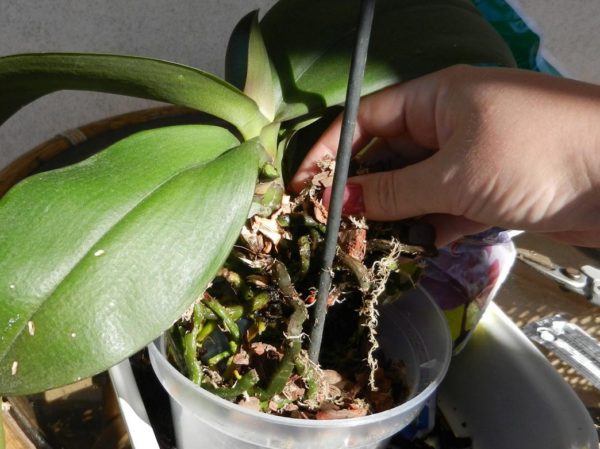 As chemical agents are suitable:
As chemical agents are suitable:
- Biotlin;
- Commando
- Mospilan;
- Vertimek;
- Oberon;
Other formulations may be used.
Drosophila is a fruit midge whose individuals fly in a flock. Outwardly, they resemble small flies of a light brown hue. The eyes are red, the body reaches a length of 4 -5 mm. It actively reproduces - at a time the female lays up to 400 eggs.
Development lasts one day, and the larvae live 5 days.On the 6th, the reproduction process in an already adult individual begins again. Appear on rotten soil, due to excessive watering. They settle on the upper layers of the earth without causing special harm to the flower.
Drosophila is attracted to decay processes, for example, with:
- the use of tea leaves;
- peels of vegetables or fruits;
- excessive drying of the soil.
If midges of this type appear in the orchid, it is enough to remove products that are subject to oxidation.
How to get rid of pests at home
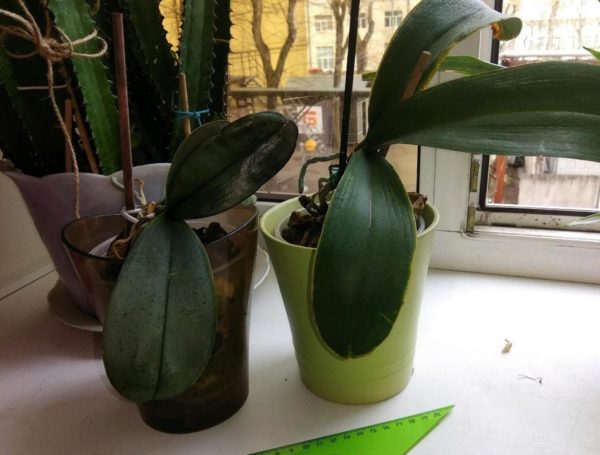 If midges in orchids are already found, how to get rid of it can become a serious problem. You can display midges in the following ways:
If midges in orchids are already found, how to get rid of it can become a serious problem. You can display midges in the following ways:
- using folk recipes;
- horticultural chemicals;
- using soil change.
If midges are wound up, then initially, they need to be identified, and then, remove the larvae, adults and overcome the causes that caused them. It is possible to deal with various pests with improvised means. Most orchids, like any flower, are subject to attack by various insects and not all growers trust chemical newfangled compounds. If black orchids appear in orchids or white midges prevail, then it is important to immediately process the flower. For certain reasons, the housewives are trying to lime the pests that wound up in the soil of orchids, natural compounds.
Small midges in orchids are afraid of the following home solutions:
- Pass two cloves of garlic through a garlic press and pour hot water, leaving after that for 4-5 hours. With a solution, wipe the foliage on all parts.
- A tablespoon of sunflower or olive oil, dissolve in half a liter of clean water and spray.
- Soap solution - add a teaspoon of liquid soap to a glass of water and wipe the sheet surface.
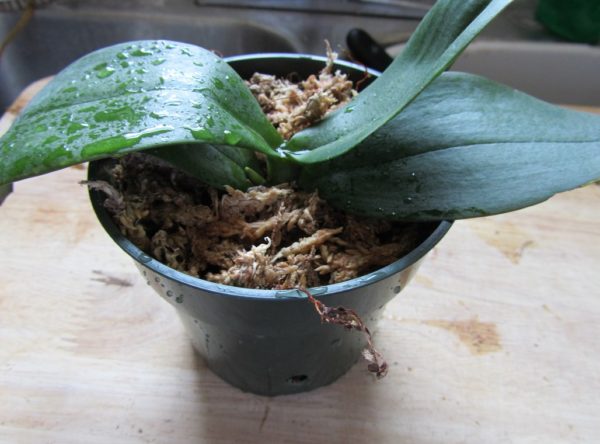 The last recipe can be used as a prophylaxis, so as not to small midges wound up. You can make this composition and apply as soon as one of the symptoms of the disease appears.
The last recipe can be used as a prophylaxis, so as not to small midges wound up. You can make this composition and apply as soon as one of the symptoms of the disease appears.
You can process flowers and chemical compounds. The most suitable are:
- Fundazole - protects against all types of dew, mold, rot.
- Fitosporin - protects against diseases of a bacterial and fungal nature, can be used for spraying and processing damaged leaf. Use only liquid form.
- Antibiotics.
- Vitamin B.
- Urea.
- Chlorhexidine.
- Iron Chelate.
- A mixture of succinic acid and glucose.
- Epin.
- Zircon, Actelik, Fitoverm, Appolo.
- Fertilizers of nitrogen type.
- Based on a mixture of phosphorus and potassium.
Prevention
The easiest way to deal with pests before they have time to start. Therefore, to fight diseases, you first need to get rid of the conditions that provoke them. Subject to all the requirements for care, the question about midges in the orchid, and how to get rid of them will not arise.
So that gray or white plaque does not appear on the leaves of the orchid, Prevention should be applied:
- Spraying with conventional formulations.
- Daily inspection of leaves for abnormalities.
- Moderate watering and drought.
- Use during transplantation and subsequent care of only clean garden tools.
- Transfer flower to clean pot immediately after purchase.
- A small number of flowers on the windowsill.
The listed methods will not allow flower pests to appear and provide lush flowering.
Unpleasant and harmful “tenants” often start on indoor flowers. Many of them are able to completely destroy the flower, preventing it from blooming completely. In order for the orchid to grow, it is important to provide it with good care and to protect it in a timely manner from diseases and pests.

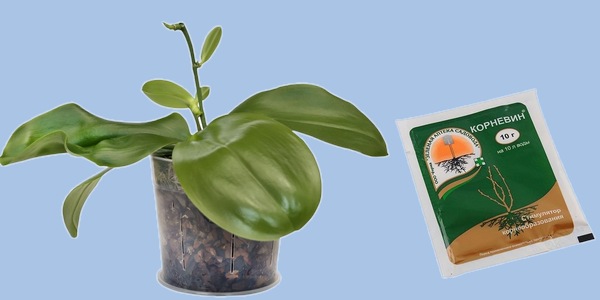
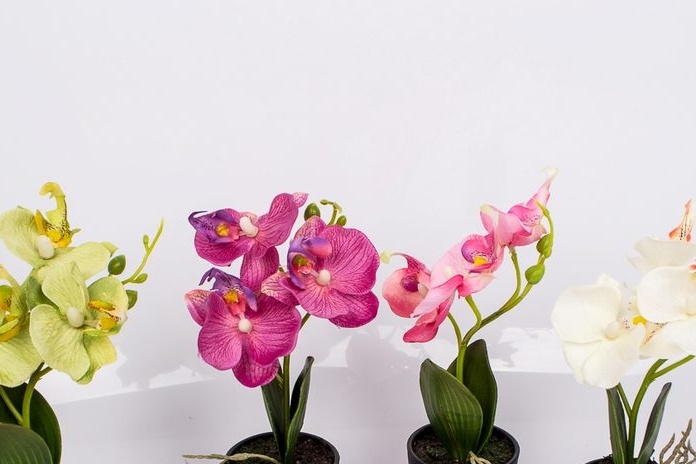
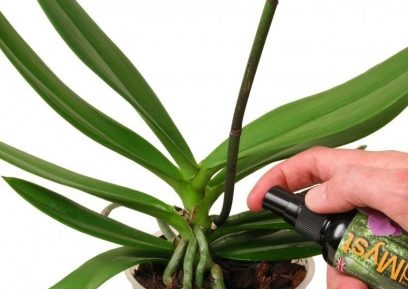
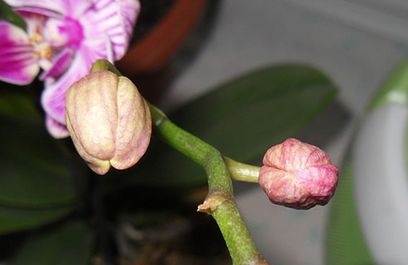 Reasons why orchids fall flowers and what to do
Reasons why orchids fall flowers and what to do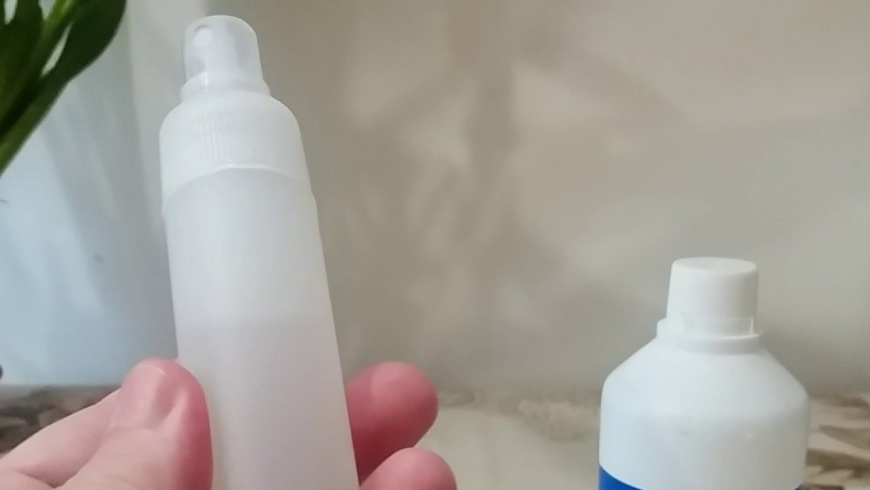 How to use hydrogen peroxide for orchids and why
How to use hydrogen peroxide for orchids and why Midges are wound up in the orchid: effective ways to get rid
Midges are wound up in the orchid: effective ways to get rid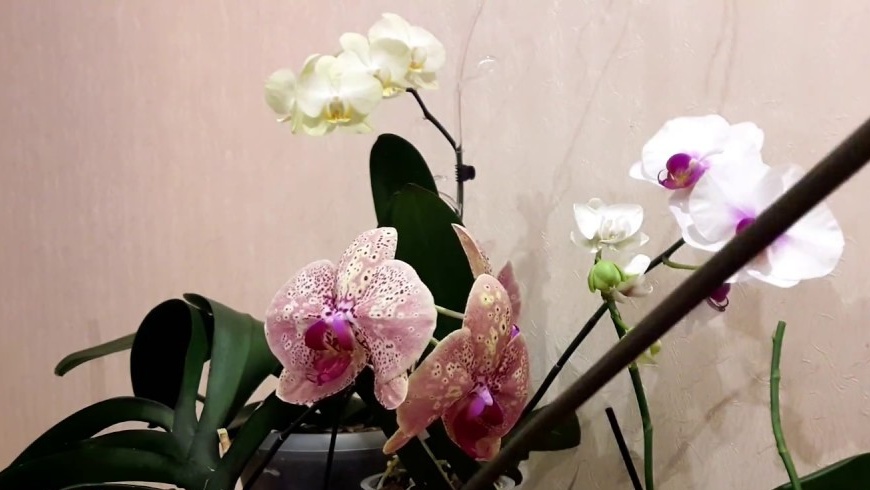 Is it possible to transplant an orchid during flowering
Is it possible to transplant an orchid during flowering